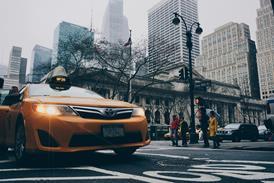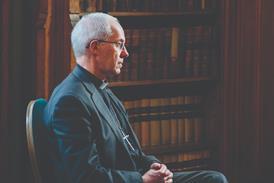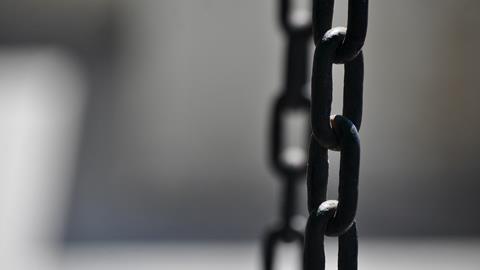Whether its hard drugs, soft porn or just internet shopping, millions of us are addicts. But turning off the tap that supplies us with addictive substances won’t solve the problem. Instead, we need to ask why so many are so thirsty in the first place, says Andy Partington
“The use of heroin by American troops in Vietnam has reached epidemic proportions,” reported the New York Times on May 16, 1971. “The epidemic is seen by many here as the Army’s last great tragedy in Vietnam.”
As the Vietnam War crept toward its conclusion, heroin use among US service personnel surged. By the early 70s, there were more heroin addicts enlisted in the ranks of the US Army than in the civilian population back home. Politicians stateside panicked at the prospect of US towns and cities being overwhelmed by drug-addicted veterans. President Nixon declared heroin addiction the nation’s leading public health concern. The military launched a programme nicknamed Operation Golden Flow, which compelled soldiers who had ever tested positive for heroin to detox and provide a clean urine sample before being allowed to return home.
The data gathered by Operation Golden Flow and face-to-face interviews with a cohort of 898 soldiers who returned from Vietnam in September 1971 formed the basis of a fascinating study published in the Archives of General Psychiatry. It showed that before Vietnam, less than 1 per cent of US soldiers had ever been addicted to narcotics. While deployed in Vietnam, almost 50 per cent of troops tried drugs, and 20 per cent reported opiate addiction. Yet, on returning to the US, rates of heroin addiction returned to pre-Vietnam levels.
All this begs vital questions whose answers shed light on today’s addiction epidemic. First, why did heroin addiction among service personnel reach such heights during deployment? Second, how did so many heroin addicts manage to leave their drug use behind them in the jungles of Vietnam?
For starters, in Vietnam, American soldiers had ready access to cheap heroin and little else on which to spend their money. Time magazine reported that heroin was “as common as chewing gum”. Indeed, heroin was advertised and promoted to soldiers, as Adam Alter vividly describes: “In Saigon, street merchants crammed sample vials into the pockets of passing GIs, hoping they would return later for a second dose. The maids who cleaned the army barracks sold vials as they worked.”
So, heroin was easy to find. But is this the whole story? Or was there something about deployment, the life of a soldier far from home, and the nature of warfare itself that coalesced to create a hunger for heroin?
Professor Lee Robins, lead author of the study, asked soldiers themselves why they used heroin. They responded strikingly: “It was enjoyable and made life in the service bearable.” Heroin was popular because it met a need. Marijuana, smoked by 75 per cent of US service members until the authorities stamped it out, did the same thing. Drugs satisfied desires created – or at least heightened – by the experience of a violent war thousands of miles from home. Once back on US soil, that need was gone. As journalist Dan Baum put it, “Take a man out of a pestilential jungle where people he can’t see are trying to kill him for reasons he doesn’t understand, and – surprise! – his need to shoot smack goes away.”
One in Five
“Addiction today is epidemic and catastrophic,” writes the neuroscientist Judith Grisel. “Worldwide addiction may be the most formidable health problem, affecting about one in every five people over the age of 14. In purely financial terms, it costs more than five times as much as AIDS and twice as much as cancer.” In several countries, including China and Denmark, more than 20 per cent of deaths result from smoking.
These are colossal numbers. And behind each digit, you will find heart breaking stories – often multigenerational – of suffering and sorrow.
Worldwide addiction may be the most formidable health problem, affecting one in every five
Scotland has the worst drug death rate in Europe. In England, among people aged 15 to 49 years, alcohol is the leading cause of ill health, disability, and death. Figures based on YouGov surveys show 18 per cent of adults in England were drinking at “increasing or higher risk” in the three months to the end of October 2021 – that’s 8 million people struggling with alcoholism.
As substance addictions rise, so does a second category of self-destructive habit: behavioural addictions to activities such as gambling, pornography, sex, food, gaming, and work. Our smartphones now connect us - 24/7 in many cases - to the suppliers of the objects of addiction. In some cases, it may take a few minutes for the dealer to deliver, but likely no longer than your local pizza delivery service. In others, the product is just a click or two away, often - as in the case of online gambling platforms and clothing retailers - accompanied by powerful inducements designed to make it easier to dive in than to walk away.
An extensive study of behavioural addiction, published in 2011 and conducted by a team of researchers led by Professor Mark Griffiths of Nottingham Trent University, reviewed 83 research studies covering 1.5 million respondents from four continents. Its conclusion? Even back then, before Apple’s iPad and the launch of Instagram, 41 per cent of us struggled with at least one behavioural addiction.
We could go on.
Enslaving Solution
“They speak of my drinking but never my thirst,” observes an ancient Scottish proverb of unknown origin.
When we think about addiction, it’s hard to get beyond the objects of addiction. Surely, “demon drugs” are the problem? Won’t blocking access to porn sites fix this?
Well, yes. If you could turn off the supply tap, that would certainly help. But Vietnam – and a wider body of research its story illustrates – demands that we dig deeper to ask why so many of us are so thirsty for addictive experiences.
My friend Huseyin is adamant that when drugs came into his life, they delivered something far more valuable to him than just a high.
“I’ve been traumatised. I’ve gone through parents divorcing, Dad killing someone, Dad going to prison, violence in the home, and a whole incongruence between the culture at home and the culture of my community as a Turkish kid growing up in North London. Through all of that, I couldn’t run away. I couldn’t fight back. I was a little kid.”
“When I found drugs, it really helped me. When I first took heroin, I remember thinking, Why isn’t everyone doing this? This is the best thing since sliced bread. The drugs made a difference, not just to how I felt. They connected me back to myself. They connected me to others, and they connected me to the world around me. Drug use was an answer to the way I was feeling. It was a solution, my first attempt at healing. It worked and was fast-acting, so I grabbed it with both hands.”
Why are increasing numbers unable to control their use of drink, drugs, sex, smartphones, gambling, gaming, and food? Addictions are a solution long before they’re a problem. They arrive as answers to unspoken prayers. They engage us in a whole-person experience that’s profoundly rewarding because it meets deep and vital needs. They deliver inner peace, self-assurance, emotional soothing, life purpose, a sense of identity, tribal belonging, mental escape, and spiritual experience.
In this context, psychologist Bruce Alexander likens addiction to hibernation. It’s an instructive and compelling analogy. “Hibernation is a costly adaptive process. Hibernation protects animals from the harshness of winter or other environmental stringencies… This protective retardation of function comes at the cost of weakening the hibernating creatures, taxing their physiological systems to the limit, and making them vulnerable to predators.”
Why are we so vulnerable to the lure of the “enslaving solution” found in addictive experiences? Many of us are drawn to this form of hibernation we call addiction because when we look forward, we feel hopeless; when we look within, we find emptiness; when we look behind us, we see personal stories characterised by abuse, neglect, dysfunction, and regret - adversities that have left us deeply wounded - and, when we look around us, we find we’re disconnected from others, detached from a sense of community and belonging, bereft of close relationships.
We use drugs and alcohol, and we keep using them even when they start to do us serious harm because we’re hurting, hopeless, empty, and alone. The same is true of gambling, porn, food, shopping, work, and more. The objects of addiction offer a dependable, immediate, and immersive alternative to the harsh reality of life.
What can the Church do?
First, engage with the addiction issue. Surely, a signature feature of our missional context, the cause of so much pain, should occupy more of our attention? Addiction affects one in five of us. Let’s talk about it!
Second, appoint a Recovery Champion. The more we hear from those with personal experience of addiction and recovery – of all kinds – the better. They’ll help us to become addiction-preventing, recovery-promoting communities, and the stigma and shame associated with addiction will lose its power.

Third, establish connections with addiction/recovery services in the wider community, including counselling services, 12-step groups (such as Alcoholics Anonymous and Gamblers Anonymous), and statutory services. As active members of a local addiction care network, we can offer healing, wholeness, and hope to those gripped by addiction.
Fourth, go deeper with God and one another. Anaemic spirituality and superficial relationships provide little of genuine value to those resisting the siren call of a bottle, syringe, or hookup app. This isn’t a matter of style. It’s a matter of substance, of becoming communities that offer living hope to the hopeless, true satisfaction to the empty, shalom to the hurting, and rich community to the disconnected.
Andy’s new book, Hope in Addiction (Moody Publishers) is available now



































2 Readers' comments